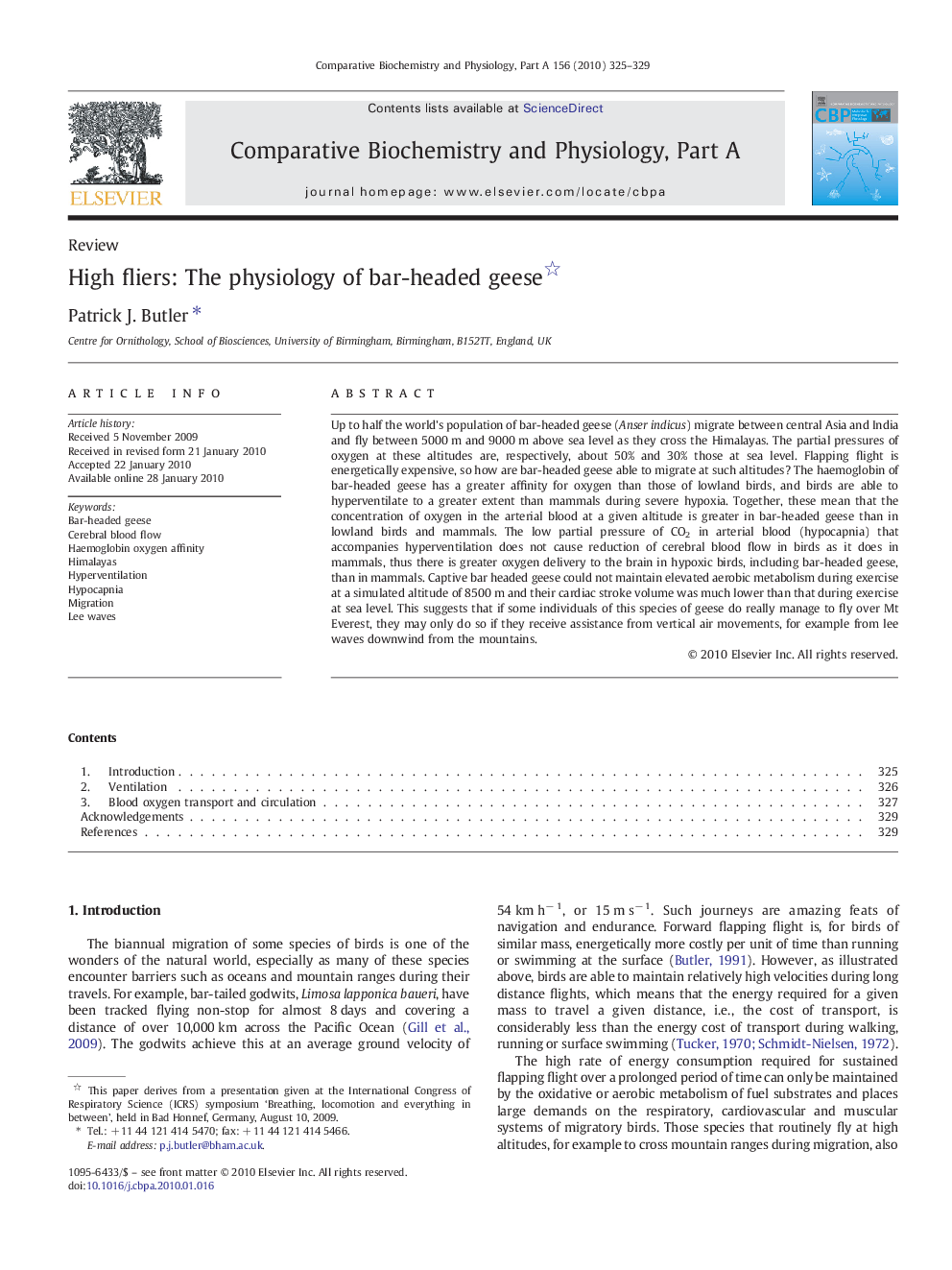| کد مقاله | کد نشریه | سال انتشار | مقاله انگلیسی | نسخه تمام متن |
|---|---|---|---|---|
| 1972637 | 1060282 | 2010 | 5 صفحه PDF | دانلود رایگان |

Up to half the world's population of bar-headed geese (Anser indicus) migrate between central Asia and India and fly between 5000 m and 9000 m above sea level as they cross the Himalayas. The partial pressures of oxygen at these altitudes are, respectively, about 50% and 30% those at sea level. Flapping flight is energetically expensive, so how are bar-headed geese able to migrate at such altitudes? The haemoglobin of bar-headed geese has a greater affinity for oxygen than those of lowland birds, and birds are able to hyperventilate to a greater extent than mammals during severe hypoxia. Together, these mean that the concentration of oxygen in the arterial blood at a given altitude is greater in bar-headed geese than in lowland birds and mammals. The low partial pressure of CO2 in arterial blood (hypocapnia) that accompanies hyperventilation does not cause reduction of cerebral blood flow in birds as it does in mammals, thus there is greater oxygen delivery to the brain in hypoxic birds, including bar-headed geese, than in mammals. Captive bar headed geese could not maintain elevated aerobic metabolism during exercise at a simulated altitude of 8500 m and their cardiac stroke volume was much lower than that during exercise at sea level. This suggests that if some individuals of this species of geese do really manage to fly over Mt Everest, they may only do so if they receive assistance from vertical air movements, for example from lee waves downwind from the mountains.
Journal: Comparative Biochemistry and Physiology Part A: Molecular & Integrative Physiology - Volume 156, Issue 3, July 2010, Pages 325–329